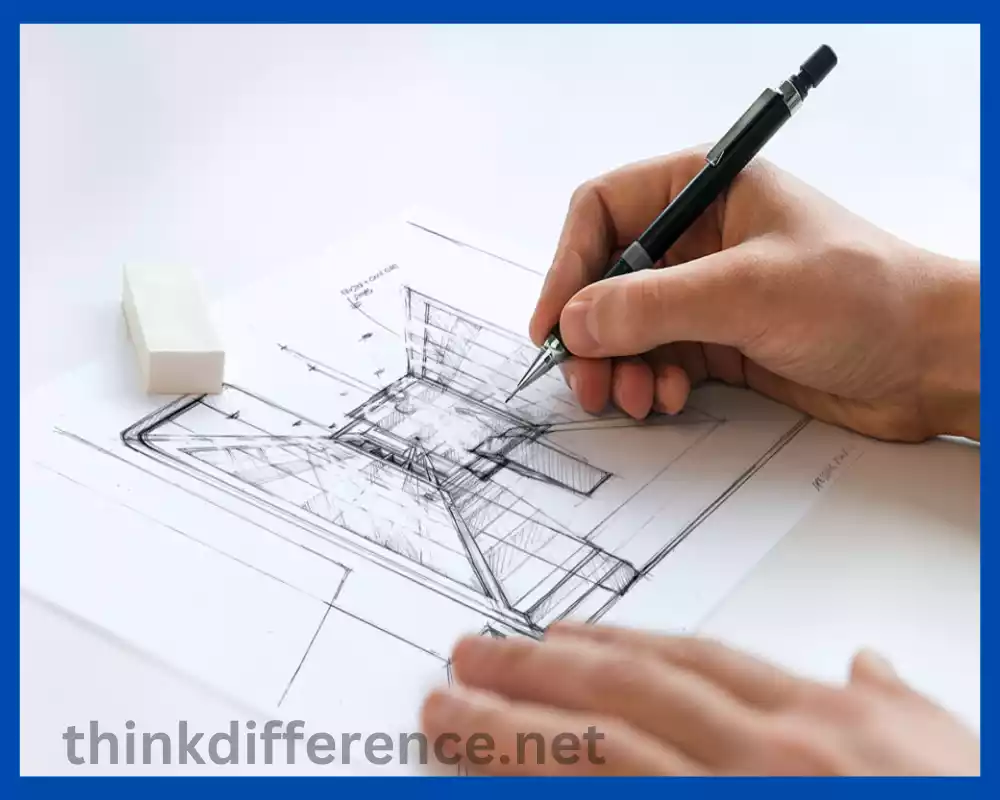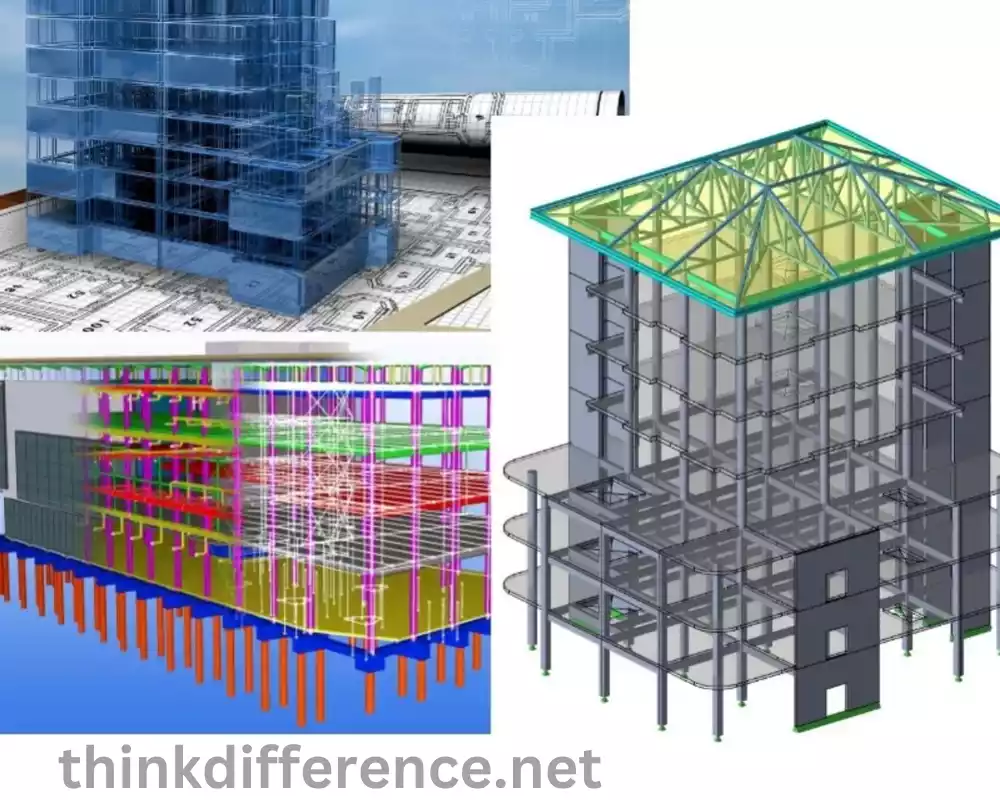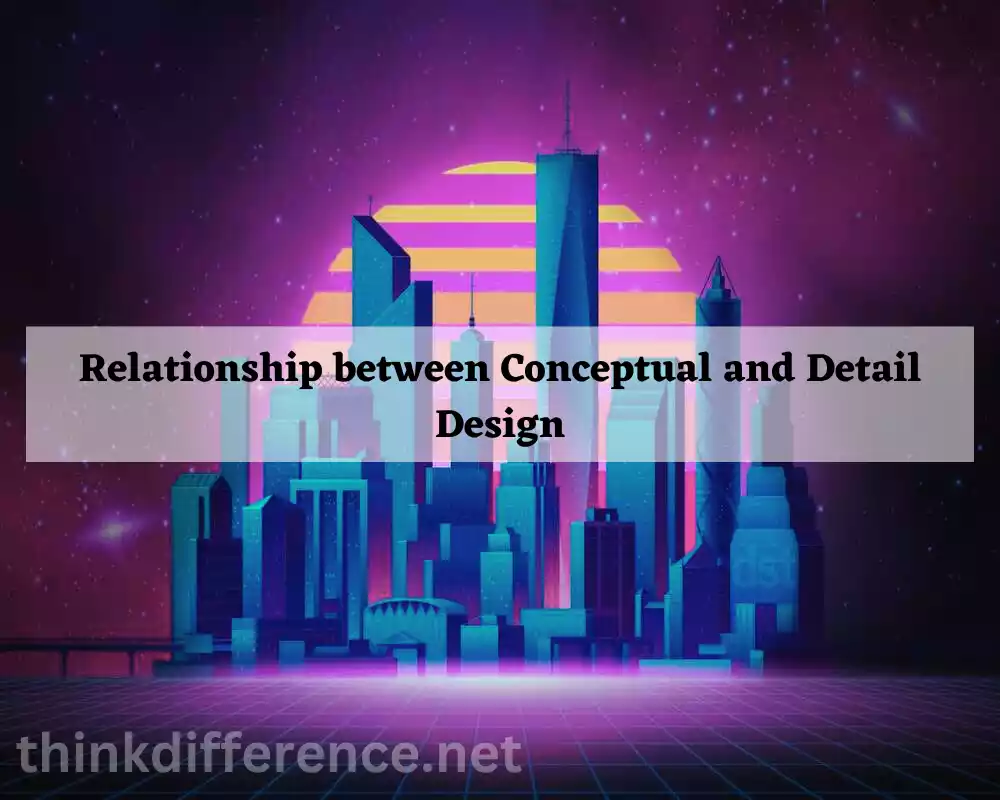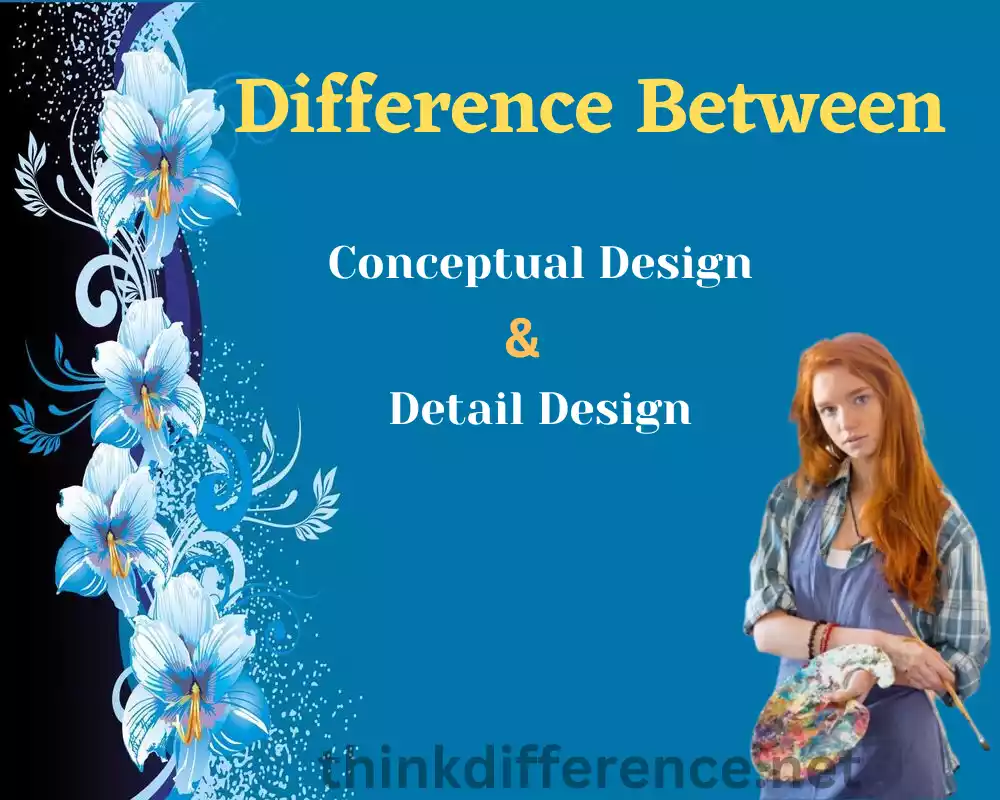Conceptual and Detail Design are two crucial steps. These stages play an essential part in creating innovative structures, systems, and structures. In this article, we will explore the concepts and significance of both conceptual and detailed design, their interrelationship, best practices, tools, and technologies, along with case studies and future trends.
Definition of Conceptual and Detail Design
The conceptual phase is an early phase in the designing process that begins by exploring diverse ideas and refining existing ones. This may involve brainstorming, imaginative thinking, and visualizing the vision and direction of systems, products, or projects from its initial concept stage forward. Focus should remain on high-level user experiences without going into technicalities too deeply – providing new concepts or approaches which might, later on, create a framework for subsequent phases of the designing process.
Detail design is the phase of the design process where the concepts and ideas generated in the conceptual design stage are refined and translated into specific, detailed specifications. It involves a thorough examination of the design requirements, technical constraints, and practical considerations to create a comprehensive and precise design solution. Detail design takes into account the manufacturing processes, material selection, component specifications, and exact dimensions to ensure the design can be effectively implemented. The focus is on transforming conceptual ideas into feasible and functional designs that can be executed or manufactured.
The conceptual design emphasizes creating high-level concepts and outlining a vision, while detail design works on translating these ideas into precise specifications that could be executed successfully. Both stages require working as part of a team to come up with effective designs that are executed flawlessly.
Importance of Conceptual and Detail Design in Various Industries
Conceptual and detailed design are crucial in various industries as they serve different purposes and contribute to the success of a project or product. Here are some examples of how conceptual and detail design are important in different industries:
1. Architecture and Construction:
- Conceptual Design: Architects use conceptual design to explore and visualize different design ideas, spatial arrangements, and aesthetics of buildings. It helps in establishing the overall concept and design intent.
- Detail Design: Detail design in architecture involves creating precise construction drawings, specifications, and material selections. It ensures that the design is structurally sound, meets building codes, and can be effectively constructed.
2. Product Design and Manufacturing:
- Conceptual Design: In product design, conceptual design allows designers to generate innovative ideas, explore user needs, and define the overall product concept. It helps in identifying unique features, aesthetics, and functionality.
- Detail Design: Detail design in product manufacturing involves creating detailed engineering drawings, specifying materials, dimensions, and tolerances. Product assurance ensures that products are produced efficiently, comply with quality standards, and work as intended.
3. Industrial Engineering and Manufacturing:
- Conceptual Design: In industrial engineering, conceptual design focuses on optimizing the overall system layout, workflow, and processes. An audit helps in identifying any bottlenecks, increasing efficiency, and decreasing expenses.
- Detail Design: Detail design in industrial engineering involves creating detailed equipment and facility designs, specifying production methods, and developing assembly line layouts. Optimization ensures manufacturing processes are designed in such a way as to promote efficiency, safety, and high-quality outputs.
4. Software Development and User Interface Design:
- Conceptual Design: In software development, conceptual design involves defining the overall user experience, interface flow, and information architecture. It helps in creating user-centric designs and aligning them with business objectives.
- Detail Design: Detail design in software development focuses on designing individual screens, interactions, and visual elements. It involves creating detailed wireframes, mockups, and style guides to guide the implementation process.
In each of these industries, conceptual design sets the foundation by establishing the vision and guiding principles, while detail design brings those concepts to life by providing the necessary specifications and technical details for successful execution. Both stages are essential for achieving a well-designed and functional result.
Conceptual Design
Conceptual design is the initial stage in designing, where concepts, ideas, and elements of designs are discussed and refined. It is focused on generating creative solutions and defining the overall direction of a project, product, or system. Conceptual design plays a crucial role in establishing the conceptual framework, key features, and design intent before delving into the specifics.

Key aspects and characteristics of conceptual design include:
- Ideation and Brainstorming: Conceptual design involves generating a wide range of ideas, concepts, and possibilities through brainstorming sessions and creative thinking. This phase encourages free thinking and exploration of different approaches.
- High-Level Exploration: The emphasis in conceptual design is on exploring high-level concepts and overarching ideas rather than getting into specific details. It aims to capture the essence and vision of the design.
- Functionality and User Experience: Conceptual design focuses on defining the functionality and user experience of the design. It considers how users will interact with the product or system and strives to create an intuitive and effective user experience.
- Limited Technical Specifications: Conceptual design does not involve detailed technical specifications. It focuses more on conceptual aspects such as form, function, aesthetics, and user needs rather than technical implementation.
- Exploration of Alternatives: Conceptual design encourages the exploration of multiple design alternatives and approaches. It involves evaluating different options and considering their advantages, disadvantages, and feasibility.
- Visualization and Communication: Conceptual design often involves creating visual representations such as sketches, diagrams, or simple prototypes to communicate and convey the design concept effectively to stakeholders.
Conceptual design is essential as it sets the foundation for the subsequent design stages. It helps designers and stakeholders align their understanding of the project’s goals, vision, and requirements. Exploring various ideas and concepts early on, enables the identification of potential design challenges, innovative solutions, and the establishment of a clear design direction before moving into the detailed design phase.
Detail Design
Detail design is the stage in the design process in which ideas and concepts generated during conceptual design are refined into specific, executable specifications, which take into account both design requirements, technical limitations, and practical constraints. It requires conducting in-depth investigations regarding requirements as well as any limitations or practical considerations to produce an exhaustive yet precise solution to design.

Key aspects and characteristics of detail design include:
- Specific Implementation Details: Detail design focuses on defining the specific implementation details of the design. It involves specifying precise dimensions, materials, components, and technical specifications necessary for the construction, production, or implementation of the design.
- Technical Considerations: Detail design takes into consideration aspects such as the strength of structure, manufacturability, and durability, as well as compliance with standards and regulations. It ensures that the design is feasible, functional, and meets the required performance criteria.
- Iterative Refinement: Detail design often involves an iterative process of refinement and optimization. Designers continually refine and optimize designs based on feedback from testing, analysis, and feedback, to meet goals and performance standards.
- Manufacturing and Production Considerations: In detail design, manufacturing, and production considerations become prominent. It involves selecting appropriate manufacturing processes, determining tolerances, specifying materials and finishes, and addressing assembly methods to ensure efficient and cost-effective production.
- Detailed Documentation: Detail design requires the creation of detailed documentation, including engineering drawings, specifications, bills of materials, and assembly instructions. These documents provide precise instructions for the construction, fabrication, or production of the design.
- Collaboration with Other Disciplines: Detail design often involves close collaboration with other disciplines such as engineers, manufacturers, suppliers, and contractors. At each phase, stakeholders need to understand and be familiar with the design specifications, to contribute towards its successful implementation.
Detail design is crucial as it transforms conceptual ideas into practical and feasible design solutions. A document that connects concepts with practical implementation by providing specifications and technical details necessary for efficient execution of design concepts. Detail design ensures that the design is optimized for performance, manufacturability, and functionality and enables the successful realization of the intended design vision.
Differences between Conceptual and Detail Design
Conceptual Design:
- Objective: Conceptual designs aim to reveal and establish a concept or direction as well as establish the top-level concept of any structure or system. It focuses on generating ideas, understanding user needs, and establishing the design’s fundamental principles and goals.
- Scope: Conceptual design is broad and holistic, encompassing the initial ideation, brainstorming, and concept development stages. It involves exploring various design alternatives, considering aesthetics, functionality, user experience, and market viability.
- Level of Detail: Conceptual design is characterized by a lower level of detail. It focuses on capturing the essence of the design concept without getting into specific technical or engineering details.
- Iterative Process: Conceptual design often involves an iterative process of refining and evolving the initial ideas. Designers generate multiple concepts, evaluate their feasibility and make decisions on which concepts to pursue further.
- Tools and Techniques: Tools commonly used in conceptual design include sketches, mood boards, storyboards, and 3D modeling software. These tools aid in visualizing and communicating the design concepts effectively.
Detail Design:
- Objective: The objective of detail design is to develop a comprehensive and precise plan for the implementation of the design concept. It involves specifying the design’s technical details, engineering requirements, dimensions, materials, and manufacturing processes.
- Scope: Detail design narrows down the focus and scope of the design, providing a more in-depth and granular understanding of how the concept will be realized. It involves translating the conceptual design into a practical and feasible solution.
- Level of Detail: Detail design is characterized by a higher level of detail. It involves specifying dimensions, tolerances, materials, manufacturing methods, and other technical considerations. The design is broken down into individual components or elements, with detailed engineering drawings and specifications created.
- Optimization and Analysis: Detail design often includes optimization and analysis to ensure the design meets performance requirements, safety standards, and cost targets. Engineers perform simulations, testing, and analysis to validate the design’s functionality and performance.
- Documentation: Detail design requires the creation of comprehensive and accurate documentation that provides clear instructions for the manufacturing, construction, or implementation of the design. This includes detailed engineering drawings, bills of materials, specifications, and assembly instructions.
The conceptual design focuses on establishing the overall vision and concept of a design, exploring ideas, and understanding user needs. Detail design narrows down the focus, delving into technical details, engineering requirements, and manufacturing considerations to create a precise implementation plan. Both phases are essential components of the design process, yet differ about goals, scope, degree of detail, and methods and tools employed.
Relationship between Conceptual and Detail Design
Detail and conceptual designs are two essential steps of the design process that work hand-in-hand to produce effective and well-executed designs. Their partnership yields mutual benefits as each step builds off of one another to complete and refine designs.

Here are some major aspects of this relationship between detail and conceptual designs:
- Conceptual Design Sets the Foundation: Conceptual design establishes the foundation for the design process. It focuses on generating ideas, exploring concepts, and defining the overall vision and direction of the design. It helps identify the goals, user needs, and design intent, providing a starting point for the subsequent detailed design stage.
- Detail Design Refines and Translates Concepts: Detail design takes the concepts and ideas generated in the conceptual design stage and translates them into specific, detailed specifications. Technology evaluation uncovers and refines design by considering technical factors, dimensions, and materials as well as production processes and limitations in terms of technology. Detail design ensures that the design is practical, feasible, and meets the required standards and objectives.
- Iterative Process: The relationship between conceptual and detailed design is iterative. As the detailed design progresses, feedback and insights from the detailed specifications may prompt revisions or adjustments to the initial conceptual design. Similarly, further exploration during detail design might inspire new ideas or alternative solutions that can be revisited in the conceptual design phase. This iterative process allows for refinement and improvement of the design at each stage.
- Collaboration and Communication: Effective collaboration and communication between conceptual and detail designers are crucial for a seamless transition between the two stages. The conceptual design team shares their vision, concepts, and design intent with the detail designers, ensuring a clear understanding of the overarching goals. Detail designers, in turn, provide feedback, technical expertise, and practical considerations to refine the design and make it feasible.
- Balance and Integration: Conceptual design and detail design must be balanced and integrated to create a successful design. The high-level ideas and concepts generated in the conceptual design stage need to be translated into detailed specifications during detailed design without losing sight of the original design intent. The balance between creativity and technical feasibility should always be maintained during the design process.
- Continuous Refinement: The relationship between conceptual and detailed design is not linear but rather an ongoing cycle. As detail design progresses, new insights and considerations may emerge, requiring adjustments or refinements in the conceptual design. Similarly, as conceptual design evolves, it may inspire new ideas or changes in the detailed specifications. This continuous refinement ensures that the design remains coherent, effective, and aligned with the desired outcomes.
Conceptual design and detail design are interconnected stages that work together to develop a successful design solution. Conceptual design sets the foundation and provides the vision, while detailed design refines the concepts into detailed specifications. The iterative relationship between the two stages allows for continuous refinement, collaboration, and integration to create a well-executed design.
Best Practices for Conceptual and Detail Design
Regarding both conceptual and detailed design processes, many good practices exist for creating positive design outcomes.
Here are some key best practices for both stages:
Conceptual Design:
- Understand User Needs: Start by thoroughly understanding the needs, preferences, and pain points of the end-users. Conduct user research, interviews, and observations to gather insights that will inform the design process.
- Foster Creativity: Encourage a creative and open-minded atmosphere during the conceptual design phase. Promote brainstorming sessions, idea sharing, and exploration of diverse concepts to generate a wide range of innovative ideas.
- Define Design Objectives: Clearly define the design objectives and goals upfront. Establish the key criteria for success, such as functionality, aesthetics, usability, and sustainability. These objectives will guide the conceptual design process and help evaluate potential design solutions.
- Consider Multiple Perspectives: Involve a diverse set of stakeholders, including designers, engineers, users, and domain experts, in the conceptual design process. This ensures a broader range of perspectives and helps identify potential design constraints and opportunities.
- Create Visual Representations: Utilize sketches, mood boards, or simple prototypes to visualize and communicate design concepts effectively. Visual representations help convey the design intent and facilitate discussions and feedback from stakeholders.
Detail Design:
- Collaborative Approach: Foster collaboration and communication between different teams involved in the detailed design process, such as designers, engineers, manufacturers, and suppliers. Encourage cross-functional meetings, design reviews, and information-sharing to ensure a holistic and well-coordinated design.
- Address Technical Constraints: Pay close attention to technical constraints and requirements during detailed design. Consider factors such as materials, manufacturing processes, regulations, safety standards, and budget limitations. Ensure that the design is technically feasible and can be implemented within the given constraints.
- Iterative Refinement: Embrace an iterative approach during the detail design phase. Seek feedback from stakeholders, conduct prototyping, and perform testing to identify and address potential design flaws or improvements. Continuously refine the design based on these iterations.
- Design for Manufacturability: Manufacturability should always be at the core of design when considering systems or products for production. Its consideration allows manufacturers to produce cost-efficiently. Consider factors such as ease of assembly, component availability, standardization, and scalability during the detail design stage.
- Document and Communicate: Create detailed documentation of the design specifications, including engineering drawings, specifications, and bills of materials. Clear and comprehensive documentation ensures that the design intent is effectively communicated to manufacturers, contractors, and other stakeholders.
- Validate and Test: Conduct rigorous testing and validation of the detailed design. Perform simulations, prototypes, and user testing to verify that the design meets the desired performance, functionality, and user experience requirements.
By following these best practices, designers can enhance the effectiveness and efficiency of both the conceptual and detailed design stages, leading to well-informed, well-coordinated, and successful design outcomes.
Industries that Rely on Conceptual and Detail Design
Conceptual and detailed design are essential in various industries where designing and creating products, systems, or structures are involved.
Here are some industries that heavily rely on conceptual and detail design:
- Architecture and Construction: Architects and construction professionals rely on conceptual design to envision and conceptualize building structures, spaces, and aesthetics. Detail design is crucial for creating precise construction drawings, specifying materials, and ensuring that the building is structurally sound and compliant with regulations.
- Product Design and Manufacturing: Industries involved in product design and manufacturing, such as automotive, electronics, furniture, and consumer goods, heavily rely on both conceptual and detailed design. Conceptual design helps in generating ideas, defining the product’s purpose, and conceptualizing its form and function. Detail design focuses on creating detailed engineering specifications, selecting materials, and optimizing the product for manufacturing and assembly.
- Industrial and Mechanical Engineering: Industries involved in industrial machinery, equipment, and systems rely on both conceptual and detailed design. Conceptual design helps engineers in developing innovative solutions optimize processes, and plan layouts. Detail design ensures that the machinery or system components are designed precisely, considering factors like structural integrity, functional requirements, and manufacturing feasibility.
- Software and User Interface Design: In the software industry, conceptual design is crucial for defining the user experience, information architecture, and overall software concept. Detail design focuses on designing individual screens, interactions, and visual elements to ensure a seamless and intuitive user interface.
- Aerospace and Aviation: The aerospace industry heavily relies on both conceptual and detailed design for aircraft and spacecraft. Conceptual design involves envisioning new aircraft concepts, exploring aerodynamics, and defining performance characteristics. Detail design focuses on precise engineering drawings, materials selection, system integration, and compliance with stringent safety and regulatory requirements.
- Civil Engineering and Infrastructure: Civil engineering industries, including transportation, bridges, dams, and infrastructure development, rely on both conceptual and detailed design. Conceptual design helps in defining the overall layout, functionality, and aesthetics of structures. Detail design focuses on precise engineering specifications, and construction drawings, and addresses factors like structural integrity, safety, and environmental considerations.
- Industrial Design and Consumer Products: Industries involved in industrial design and consumer products rely on both conceptual and detailed design. Conceptual design helps in generating innovative product concepts, defining aesthetics, and understanding user needs. Detail design focuses on engineering specifications, materials selection, and ensuring that the product can be manufactured efficiently and meets quality standards.
These are just a few examples of industries that heavily rely on both conceptual and detailed design. Almost all industries that involve designing and creating products, systems or structures require a combination of conceptual and detailed design to achieve successful outcomes.
The Role of Technology in Conceptual and Detail Design
Technology plays a significant role in both conceptual and detailed design stages, revolutionizing the design process and enabling more efficient and innovative outcomes. Here are a few key ways that technology can influence the planning and creation of details:
Conceptual Design:
- Computer-Aided Design (CAD): CAD software enables designers to easily generate digital images of concepts. Packed with powerful tools for drawing 3D modeling, sketching, and visualization – it enables rapid iteration and experimentation across numerous design options.
- Virtual Reality (VR) and Augmented Reality (AR): VR and AR technologies create captivating immersive experiences, enabling designers to experience and interact with designs virtually. This enhances the understanding of spatial relationships, ergonomics, and aesthetics, aiding in better design decision-making.
- Rapid Prototyping and 3D Printing: Rapid prototyping technology such as 3D printing enables designers to rapidly produce tangible models of their concept ideas quickly. This allows for better evaluation of form, fit, and function, facilitating effective communication and feedback during the conceptual design stage.
- Computational Design and Simulation: Advanced computational tools and simulation software enable designers to explore complex design parameters and optimize performance. It allows for parametric modeling, structural analysis, fluid dynamics simulations, and other analyses, helping designers refine their conceptual designs based on data-driven insights.
Detail Design:
- Advanced Modeling and Documentation Tools: CAD software and BIM (Building Information Modeling) tools provide powerful capabilities for creating detailed engineering models and documentation. These tools automate the creation of engineering drawings, bills of materials, and specifications, reducing manual effort and ensuring accuracy.
- Design Validation and Analysis: Technology enables designers to perform detailed analysis and validation of the design during the detail design stage. Finite Element Analysis (FEA), Computational Fluid Dynamics (CFD) and other simulation tools help designers evaluate structural strength as well as thermal performance, fluid flow dynamics, and other crucial features before manufacturing takes place. By doing this, designers are better able to optimize their designs before mass production begins.
- Collaboration and Communication Platforms: Technology facilitates collaboration and communication among design teams, stakeholders, and clients. Cloud-based platforms, project management software, and virtual collaboration tools enable real-time collaboration, document sharing, and seamless communication, fostering efficient teamwork and reducing errors and miscommunication.
- Digital Manufacturing Technologies: Advanced manufacturing technologies, such as Computer Numerical Control (CNC) machining, robotics, and additive manufacturing, integrate with detail design. Design files can be directly fed into these technologies, enabling accurate and efficient production of components and products.
- Design Automation and Parametric Modeling: Automation tools and parametric modeling capabilities streamline the detailed design process. Design automation helps generate variants of a design based on predefined rules, while parametric modeling enables the creation of flexible designs that can be easily modified and adapted to specific requirements.
Technology empowers designers by providing powerful tools for visualization, modeling, analysis, collaboration, and manufacturing. It enhances productivity, accuracy, and creativity, enabling designers to push boundaries and deliver innovative and optimized designs in both the conceptual and detailed design stages.
Case Studies Successful Conceptual and Detail Design Examples
- Tesla Model S: The Tesla Model S is an example of successful conceptual and detailed design in the automotive industry. The conceptual design phase focused on creating an electric vehicle with high performance and sleek aesthetics. The design team explored innovative solutions for battery placement, aerodynamics, and overall vehicle architecture. In the detailed design phase, meticulous engineering and optimization were applied to ensure safety, performance, and energy efficiency. Its result was an innovative electric car that revolutionized the auto industry.
- Apple iPhone: The Apple iPhone is a prime example of successful conceptual and detailed design in the consumer electronics industry. The conceptual design phase focused on creating a revolutionary touchscreen smartphone with a simple and intuitive user interface. The design team explored various concepts and user experience scenarios. In the detailed design phase, attention was given to material selection, manufacturing processes, and precise engineering specifications. The result was a highly acclaimed product that set new standards for smartphones, blending form and function seamlessly.
- Burj Khalifa: The Burj Khalifa in Dubai showcases successful conceptual and detailed design in the architecture and construction industry. The conceptual design phase aimed to create an iconic skyscraper that symbolizes Dubai’s ambition and grandeur. The design team explored various structural concepts, aesthetics, and sustainable design principles. In the detail design phase, meticulous engineering and advanced modeling techniques were employed to ensure structural integrity, safety, and functionality. This led to the construction of one of the world’s tallest structures – an impressive example of modern architecture.
- Boeing 787 Dreamliner: The Boeing 787 Dreamliner is an example of successful conceptual and detailed design in the aerospace industry. The conceptual design phase focused on creating a fuel-efficient and technologically advanced aircraft. The design team explored lightweight materials, aerodynamic features, and advanced systems integration. In the detailed design phase, precise engineering, extensive testing, and regulatory compliance were emphasized. The result was an innovative aircraft that offers improved fuel efficiency, passenger comfort, and operational performance.
- Dyson Airblade Hand Dryer: The Dyson Airblade hand dryer exemplifies successful conceptual and detailed design in the industrial and consumer products industries. The conceptual design phase aimed to create a fast, hygienic, and energy-efficient hand-drying solution. The design team explored novel air-flow technology, ergonomic considerations, and user experience factors. In the detail design phase, engineering precision, materials selection, and manufacturing optimization were key. The result was a highly effective and widely adopted hand dryer that transformed the hand-drying experience in public spaces.
These case studies demonstrate how effective conceptual and detailed design processes, coupled with innovation, attention to detail, and a deep understanding of user needs, can lead to groundbreaking and successful products, structures, and systems in various industries.
Future Trends and Innovations in Conceptual and Detail Design
The field of conceptual and detailed design continues to evolve, driven by advancements in technology and emerging trends. Here are some future trends and innovations that are shaping the landscape of conceptual and detail design:
- Generative Design: Generative design is an emerging approach that uses algorithms and artificial intelligence to generate and explore a vast number of design options based on defined parameters and constraints. This allows designers to quickly explore and evaluate numerous design alternatives, optimizing for factors like performance, weight, cost, and material usage. Generative design holds immense promise as an innovation tool by harnessing computational power to produce high-quality designs that are unique, functional, and optimized.
- Virtual Reality (VR) and Augmented Reality (AR): VR and AR technology have seen tremendous advancement over time and now stand to alter how designers approach designing products while considering user interaction. Virtual and augmented environments enable designers to experience and evaluate designs in a realistic and immersive manner, facilitating better design decision-making, collaboration, and communication. These technologies also enable clients and stakeholders to have a more intuitive understanding of the design before it is built.
- Additive Manufacturing and 3D Printing: Additive manufacturing techniques like 3D printing have revolutionized manufacturing thanks to their ability to produce intricate geometries as well as custom components with precise features. Additive manufacturing has continued its advancement over the years with increased materials, higher accuracy levels, faster production rates, and quicker turnaround times – offering many potential advantages for manufacturers of all sorts. This will have a significant impact on both conceptual and detailed design, allowing designers to explore innovative designs that were previously challenging or impossible to manufacture using traditional methods.
- Internet of Things (IoT) and Connected Devices: Integrating IoT technology into products and systems opens up exciting new avenues of conceptual and detailed design. Sensors and connected devices give designers access to real-time user behavior data and insight, offering insight into performance levels and patterns of use for users and designers alike. Utilizing data allows designers to make more informed design decisions as well as enhance user experiences through intelligent designs that respond more responsively and intelligently.
- Sustainable Design and Circular Economy: With the growing focus on sustainability, future trends in conceptual and detailed design will prioritize environmentally friendly practices. Designers will increasingly incorporate sustainable materials, energy-efficient technologies, and lifecycle considerations into their designs. The adoption of circular economy principles, such as designing for disassembly, recycling, and reuse, will also play a significant role in shaping future design practices.
- Artificial Intelligence (AI) and Machine Learning: AI and machine-learning technologies can transform the design process by automating routine tasks, suggesting designs for consideration, and helping in optimizing design processes. AI algorithms can analyze vast amounts of data, identify patterns and generate design solutions, accelerating the design process and enhancing design quality.
- Collaborative Design Platforms: Collaboration and teamwork are becoming increasingly important in design processes. Future trends predict an escalation in collaborative platforms for a design that enables instantaneous communication, collaboration, and document sharing between engineers, designers, and other parties involved in projects. These platforms will enhance efficiency, reduce errors and enable global collaboration on design projects.
These future trends and innovations have the potential to reshape the way designers approach conceptual and detailed design, enabling more efficient, sustainable, and innovative design outcomes across various industries.
Summary
The journey from Conceptual design to Detail design is a transformative process where ideas take flight and become tangible realities. Effective collaboration, creativity, and attention to detail are the pillars that support this transformation. Embracing the power of design is essential for innovation and progress in all industries.



